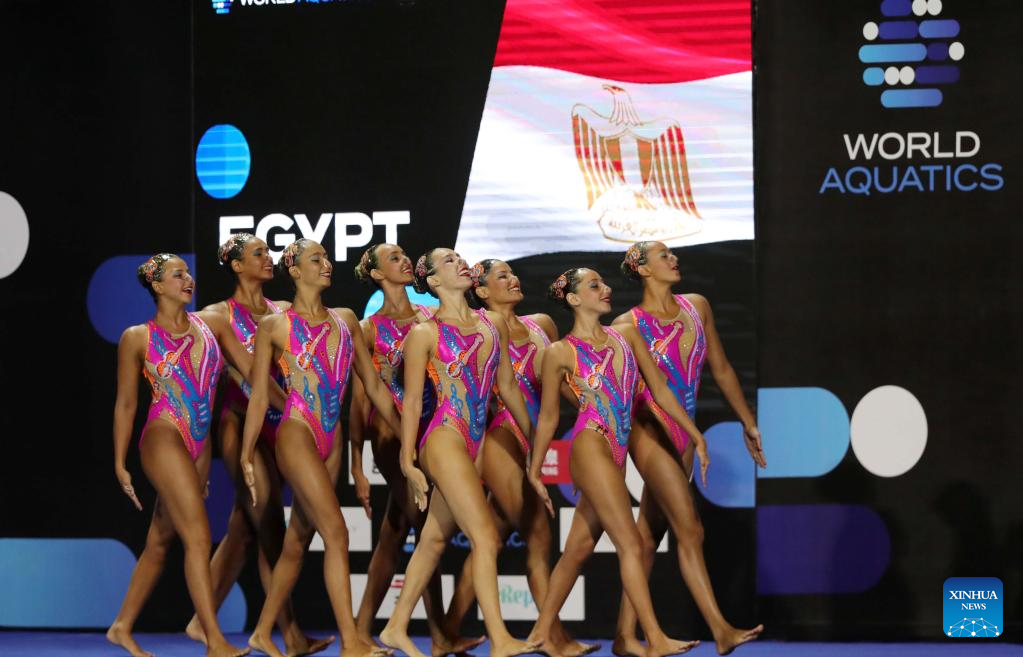Sequin swimsuits, gelatin, makeup, music, and dance—this is what artistic swimming is all about.
Or is it?
In Egypt, pursuing sports can be particularly challenging, especially for artistic swimming (more commonly known as synchronized swimming), which faces cultural barriers. In a society where it is uncommon for women to represent Egypt in swimsuits, the sport often lacks understanding and appreciation.
Yasmine El Bakry, an artistic swimming judge, highlighted the difficulties female athletes face in Egypt. As they progress into university and adulthood, wearing swimsuits for the sport becomes increasingly socially unacceptable.
“After going to university, female artistic swimmers quit the sport and resort to coaching for their love of the sport and because they wanted to continue playing the sport but couldn’t because their teammates had quit and it became unfavorable to wear swimsuits,” said El Bakry to this article’s author.
“The coaches that are training now are all ex-athletes.”
Being exposed means constantly being criticized; in a 2021 interview with Inside Synchro, two-time (and soon three-time) Olympic Champion Nihal Saafan shared her experiences as a long-time Egyptian artistic swimmer and the oldest in her team.
“Before Rio [the 2016 Olympics], the media started talking about us, the Olympic team of synchronized swimming. They showed some of our videos on TV or on YouTube, and that was great. But we had very negative comments online,” said Saafan.
“People insulted us, or said, ‘How can a dad let their daughter be like that?’ What is, ‘Like that?’ We are doing a sport. If you see tennis, they are wearing shorts. In gymnastics, they are wearing leotards. Why is synchronized swimming such a blackhole to everybody?”
Despite the criticism, artistic swimming has gained recognition over time, demonstrating that it is about teamwork, perseverance, and dedication to intense training that can last up to eight hours a day, depending on the swimmer’s age.
What is Artistic Swimming?
Artistic swimming, formerly known as synchronized swimming, is divided into two main components: figures and routines.
Figures involve executing a combination of basic leg movements and are evaluated based on control, extension, flexibility, and execution. This individual component ends at age 18, transitioning to more complex and fast-paced elements within technical routines.
Routines are the more entertaining yet challenging part of the sport. They include four main categories: Team (eight swimmers), Combo/Highlight (eight to ten swimmers), Duet (two swimmers), and Solo (one swimmer). Team and Combo routines are particularly significant across all age groups, requiring immense focus, teamwork, and trust to create a cohesive performance.
Balancing the demands of being a professional athlete with studying is not easy, especially without support from the Ministry of Education. The lack of flexible schedules often leads to athletes quitting.
“The majority of our senior national team members are between 18 and 21 years old. In contrast, many international artistic swimmers are over 30, married, and even have children. This exposure is lacking in our culture,” El Bakry noted.
Despite facing years of judgment and criticism, Saafan, who began swimming at age six after watching the Olympics on TV, is now leading the Paris 2024 Olympic team and aiming for her third Olympic appearance.
“My teammates left the sport after the 2016 Olympics, and I was the only one remaining,” said Saafan.
“My goal was not only to compete in the Olympics but to prove that you can be married, have a job, and still pursue this sport. I want to show that you can make it to the Olympics twice and still aim for more.”







Comments (0)